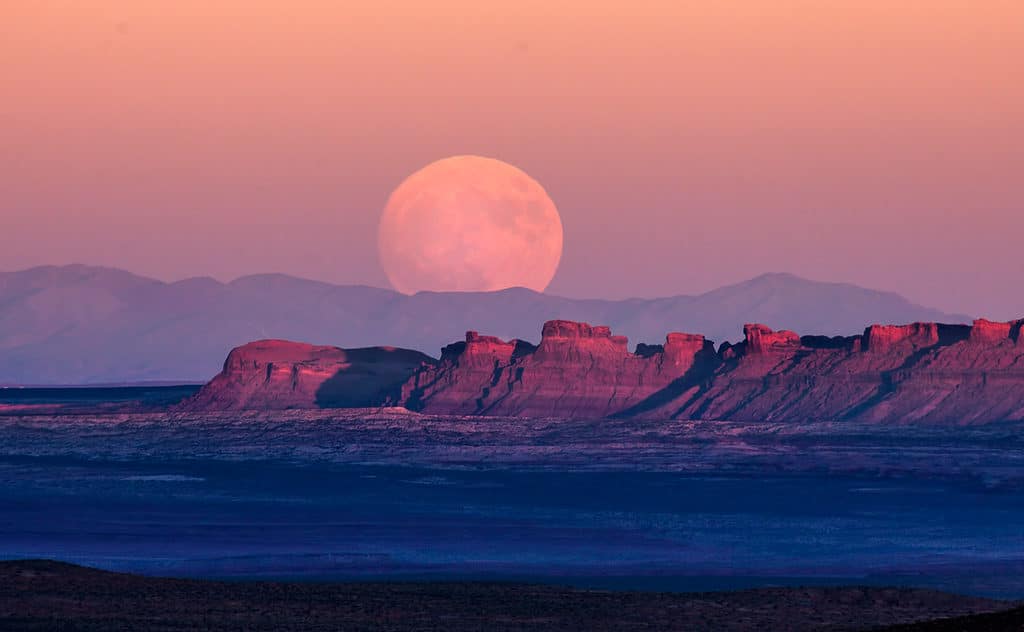Full moons have a mystical quality and while some look to the moon for its symbolism, performing rituals at just the right time, others simply look up to enjoy these celestial phenomena with the naked eye. Each month, the full moon has its own significance. Discover the origin and meaning of the Buck Moon in July!
Exploring the Fascinating World of Full Moons and Their Significance
Full moons occur when the earth’s position is right between the sun and the fully lit-up moon. These bright, expansive moons are part of the moon’s innate cycle and symbolize wholeness and the recurring nature of life as time passes. They represent the time required for reflection and the acknowledgment of abundance. In agriculture, full moons have played a role in sowing and harvesting, and a multitude of cultures have performed rituals and ceremonies in celebration of this monthly event.
Origin of the Buck Moon: The Cultural and Historical Origins of the Name
The Buck Moon in July gets its name from the Native American Algonquin people. They coined this name to describe July‘s full moon because it coincides with the time of year when bucks (male deer) grow their antlers. The Algonquin people concentrated on the east side of the Mississippi River where they saw bucks go through annual cycles of molting or shedding their antlers and re-growing them each summer. Though the Buck Moon is well-known, July’s Moon has other names too.

The Buck Moon coincides with the period when bucks grow their antlers.
©Tony Campbell/Shutterstock.com
For example, other Native American tribes called it the Thunder Moon or the Halfway Summer Moon. This is because the moon coincides with heavy thunderstorms during the summer season. In the Pacific Northwest, salmon returns to the water during July. This is why those from that area refer to it as the Salmon Moon. In Celtic traditions, the July moon is called the Earth Moon or the Claiming Moon. For Buddhists, July’s full moon is the Guru Full Moon.
Lunar Traditions and Beliefs: Understanding the Symbolic Meanings and Interpretations Associated with the Buck Moon
The Buck Moon has long been associated with life’s natural cycles, including death and rebirth. At this time of year, the moon is perceived as abundant, relating to fertility. Life is a series of ebbs and flows the way the ocean recedes and experiences high tide; the way it rushes forward violently onto shores and sometimes stays so still you can barely hear it.
Many have connected the tides of the ocean with the phenomena of the moon and see the Buck Moon as yet another representation of the cycles of life. During this period, the Buck Moon reminds you of the natural changes that take place in your life. It’s a time for you to set aside your rigid, intellectual understandings and reach into your heart to let it lead you through this next phase.
As you check in with your heart, this period requires rest and reflection. It’s a time to slow down, reprioritize, and let every part of your being rest and recover as change appears. You may start noticing or have already begun a process of change in one of your life structures, which could mean your family structure, your career structure, or even your friendship structure. As change washes over your life, lean into your heart and embrace it.

The Buck Moon is a supermoon and appears larger and brighter than usual.
©Michael Andrew Just/Shutterstock.com
Astronomical Phenomena: Examining Any Unique Astronomical Events or Features Associated with the Buck Moon
The Buck Moon is a supermoon, which is why it appears so much bigger and brighter than your typical full moon. During this period, the moon has reached its closest point in relation to the earth, which is why it appears so large. You don’t need a telescope and can observe it with your naked eye, appreciating its size and texture.
Celebration and Rituals: Exploring the Various Ways Different Cultures Celebrate and Honor the Buck Moon
The celebratory events and rituals performed during the Buck Moon vary depending on different cultures, beliefs, and individual practices. However, many cultures celebrate full moons in general. In Chinese culture, for example, there are gatherings with friends and family, moon cakes, and lanterns.
In Native American cultures, the rituals are specific to each tribe but generally involve prayer, gratitude, and connecting with the spirits. This time is usually regarded as a time for healing. There are also Wiccan and pagan traditions that use the energy of the full moon to conduct ceremonies, connect with the moon’s energy, perform spells, and set intentions.
The photo featured at the top of this post is © Fernando Astasio Avila/Shutterstock.com
Thank you for reading! Have some feedback for us? Contact the AZ Animals editorial team.







